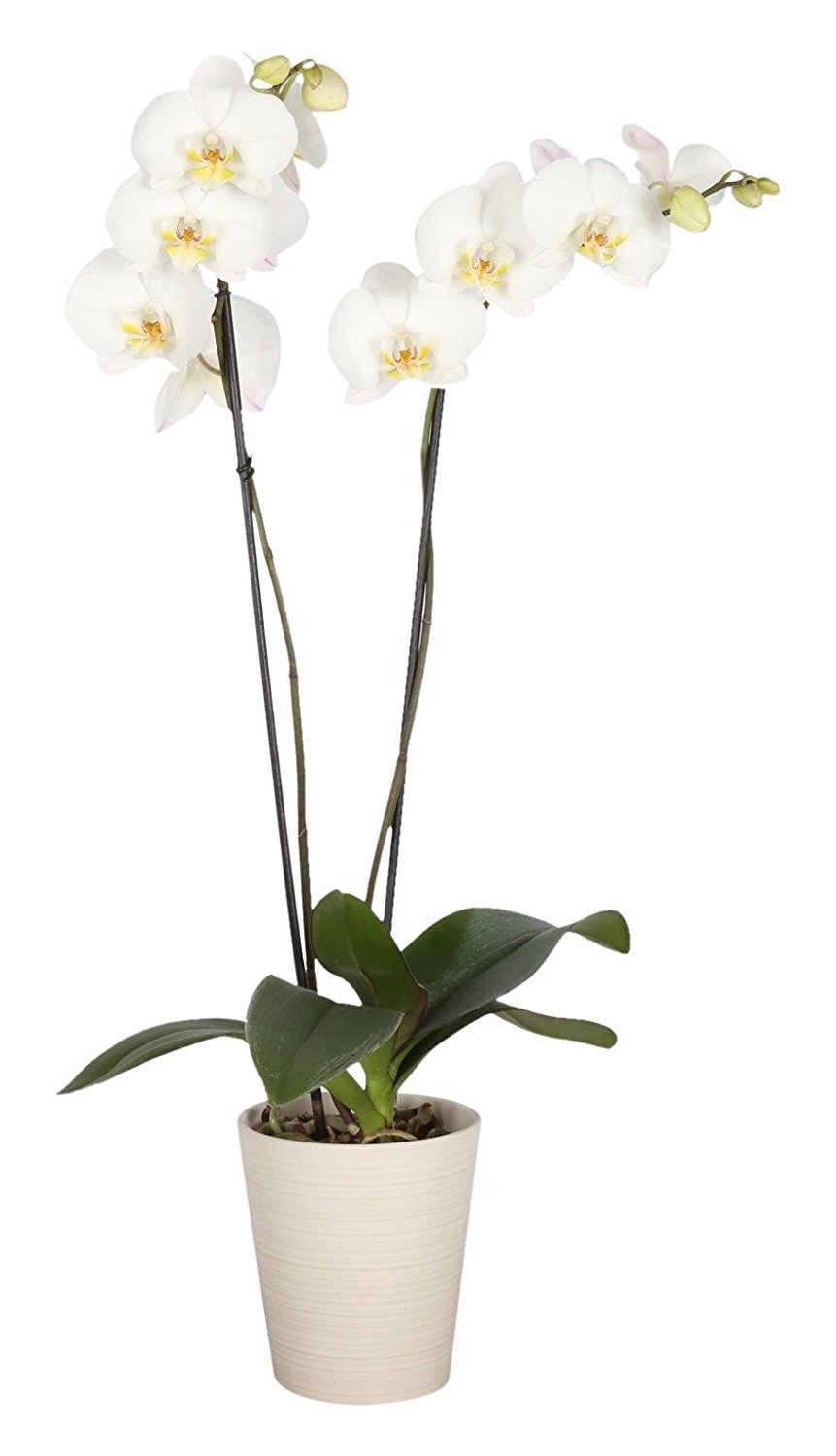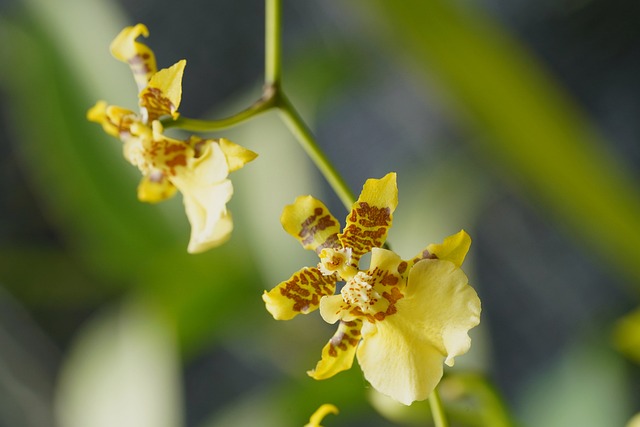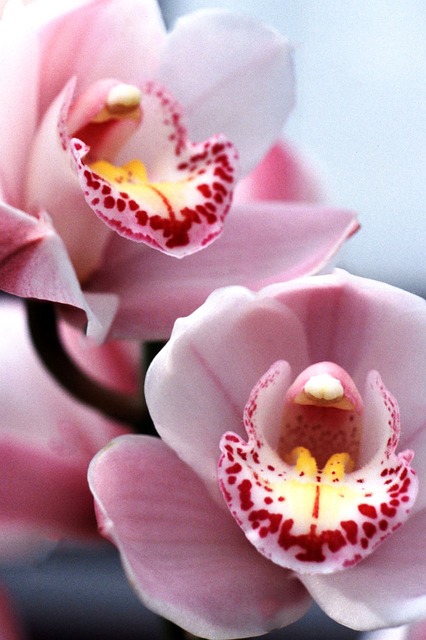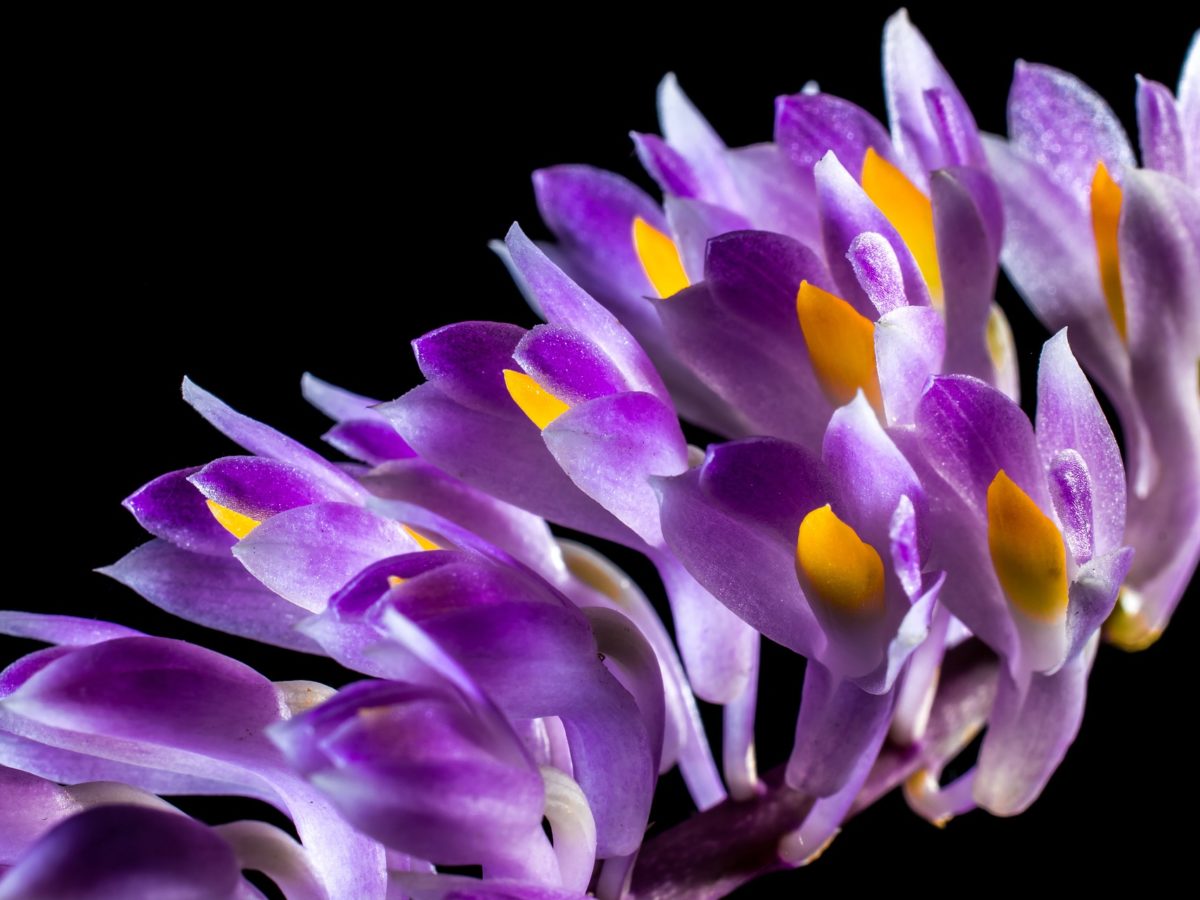Orchids are some of the most beautiful plants and coveted by many gardeners for their beauty. Today, we’re going to take a look at learning how To grow orchids indoors. While they definitely require a bit of a care and attention it’s well worth it to see these beauties bloom.
Orchid Overview
- Orchids come in a number of varieties. For first time growers, try one that’s know to be easier.
- A wide range of colors gives you lots of design options.
- Orchids don’t grow in normal soil, but generally in a very well-draining bark mix.
- Give your orchid lots of bright but in-direct light.
- Watering can be tricky. Make sure not to overwater and check the growing medium for moistness.
Space and Variety
The first important step is to assess your grow space, and then choose an appropriate type of orchid. Having the right orchid is a big step in ensuring its survival and will set you up for success. There are many different types of orchids, so finding one that fits your specific conditions should not prove to be too difficult. Keep in mind though that different types have different requirements for care. Some can be much easier than others.
Many gardeners will tell you that orchids are hard to grow, and require greenhouses in order to do so effectively. That is simply not true. While there are definitely some breeds out there that are difficult to grow, there are many others that even a beginner gardener can bloom successfully. Therefore, it’s really important to understand the type you’re starting with, and make sure it matches the care you can provide it with. We’ll look more at a couple of easy to grow varieties at the end of this article.
Soil For Potting Orchids
Unlike traditional plants that require potting soil, you’ll generally want to plant orchids in a bark mix.This is one of the biggest differences between orchids and more traditional plants.
While you can use other mediums, bark mix works particularly well due to the large amount of drainage and air movement it provides. There are also specialty made soils for orchids that will work just as well.
This change is soil medium alludes to the fact that orchids need extremely well draining soil. Orchids are very susceptible to overwatering. If you plant in normal soil it will retain far too much moisture, and this can easily kill your orchid. That’s why we use modified soil for orchids.
In terms of contaienrs, nearly any type will work from clay to plastic. In any case, make sure that the container has proper drainage which will further help reduce the threat of overwatering.
Watering Orchids
Watering is one of the trickiest part of orchids and the step that most new growers mess up. This is often due to the fact that it can be difficult to tell when the growing medium is dry, which leads to overwatering.
As noted above, overwatering is very dangerous for an orchid so your goal should be to avoid this. You want to make sure that the “soil” has completely dried out before adding more water. When you do water, make sure to soak the soil and water until you see leakage from drainage holes.
Generally, you should aim to water you orchids every 7-10 days while its growing depending on the conditions of your home. This can be adjusted by a day or so in either direction if the conditions require. Differing temperatures and humidity levels will be the biggest factor in deciding how long to go between watering.
The sure way to tell is to feel the top inch or so of your potting medium. If it’s dry then it’s time to water. Keep a log of when you water to give you a better idea of when to check.
One thing that experienced growers do to gauge water needs is compare weights between a water-logged and dry container. A freshly watered pot will be heavier than a dry one. If you can compare these weights you can tell when a plant is dry and it’s time to water.
Simply weigh the container before watering to get a baseline of how much a dry cotainer weighs. There will likely be some variation as your plant grows, but this will give you a good baseline.
If you’re planting in a clay pot you can also simply place the entire pot in water for 10-15 minutes. Since clay is very porous the water will be able penetrate the pot and be absorbed be absorbed by the bark. Afterwards, allow the pot to dry before placing it back in its location. This is a form of bottom watering, and helps eliminate any risk of overwatering as the soil should only absorb what it needs.
Lastly, keep in mind that the amount you have to water will be larger during the orchid’s growing season. This will typically be during the spring and summer months. Outside of this time, you can safely water less.
Fertilizing Orchids
Orchids are pretty hungry plants so it’s a good idea to feed them frequently. One tip is to use a water soluable fertilizer dilluted down to about 1/2 strength, and add this to the soil about twice per month. Use a balanced fertilizer to make sure your orchids gets all the nutrients they need. Another option is to go with a balanced, slow release fertilizer and use according to the package instructions.
Light
Most orchids prefer bright, indirect light. Full exposure from a eastern/western facing window or indirect southern exposure throughout the day generally provides enough light. For exact amounts of light you’ll need to look at your specific variety, but most look for 6-10 hours per day.
One thing you’ll want to avoid is bright, direct light. This, especially during the summer, can be too much for the plant to handle. This can burn out the leaves, and cause damage to the plant. Avoid direct light, and focus on getting more in-direct or filtered light.
Be careful though, as many types of orchids will require more or less light. Make sure to check the specific breed to be sure of its ideal light needs. Outside of watering, the differences here are most likely to be the culprit behind a failed plant.
Signs of too much light are yellowing or sickly looking leaves. If a plant starts to look weak or dehydrated try giving a bit more light and see if that perks it up.
Lastly, grow lights are always an option. We recommend these grow lights for orchids, they should work for smaller sized plants.
Temperature & Humidity
As there are many types of orchids, their needs for temperature are just as varied. In regards to temperature, orchids are generally categorized into three main groups: cool, intermediate, and warm. This corresponds to their ideal night temperature to grow properly
Most orchids enjoy temperatures to dip at night of about 10-20 degrees. This is most important for those in the cool or intermediate category. Warm varieties are less sensitive to temperature changes, but still do enjoy it cooler at night.
In the winter this is usually achievable by simply lowering the thermostat at night. During warmer months, consider moving the plants outside on a porch (or the reverse if the air is on) in order to achieve this needed temperature fluctuation.
Humidity levels should sit in the 60-80% range for most orchids. If you’re looking to ways to improve the humidity around plants you can check out our guide on that. In general, misting is the easiest way to quickly boost the humidity, and, when done sparingly, doesn’t risk harming the plant with too much water.
Easiest Orchids To Grow?
Most gardeners consider the Phalaenopsis, or moth, orchid to be the easiest to grow. It’s our personal suggestion for first time growers as it provides a beautiful bloom for relatively little work.

Being quite a popular variety they are not difficult to find. Most nurseries or hardware stores should have them available.
Their water and light habits are pretty typical of orchids. They need roughly 6 hours of indirect sunlight per day and should be watered every 1-2 weeks.
For temperature, they generally thrive in environments up to 75 degrees Fahrenheit with dips in the night time hours.
Here are a couple other varieties to consider:
Oncidium Orchid

These orchids spring up in large clusters of brilliant yellow flowers. They have similar care to the month orchid, and should get indirect light and weekly waterings. Give them temperatures a bit cooler at night for optimal growth.
Cymbidium Orchid

These red colored orchids are another popular indoor plant that are easy to care for. They actually enjoy very cool temperatures, and will grow best if given 2-3 weeks of temperatures in the 40-50°F range. Many gardeners will notice that this plant will actually bloom in witer due to this.
Design Tips
Orchids are a very versatile plant coming in a variety of shapes and colors. This opens up lots of room for getting creative. Orchids make a great accent piece, and due to their small size can be fit almost anywhere. Try and contrast their color with that of the room to create a point of interest that compliments the room. Or, match them with the room to create a sense of cohesion.
How To Grow Orchids Indoors
For those looking to put in the effort orchids can be a wonderful plant to grow. They are absolutely beautiful, and come in a range of styles that are sure to please any grower. If you grow orchids we’d love to hear about it, let us know which variety you grow and how it went.
FAQ
How Much Light Do Orchids Need?
It will depend on the variety, but in general look for 6-10 hours of indirect or filtered light per day. Always check with your specific variety to get more accurate lighting needs.
How Long Do Orchids Last Indoors?
When properly cared for, orchids can last for 10-15 years. This assumes they’re taken care of as improper care can quickly kill the plant.
How To Pot Orchids?
You want to start with the proper growing medium which is generally a coarse, bark mix. You also want to ensure that your chosen container is slightly bigger than the current root structure of the plant and has proper drainage.
Are Orchids Hard To Grow?
Some varieties can be while others are fairly easy. Choose a variety that matches your desired level of effort for best results.
Can You Grow Orchids Indoors?
Yes, growing indoors gives you lots of control over the enviroment which can actually make it easier to grow orchids indoors.







